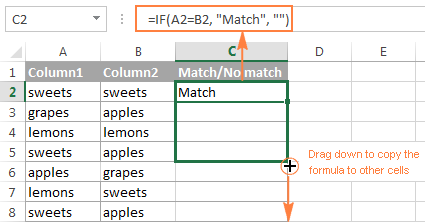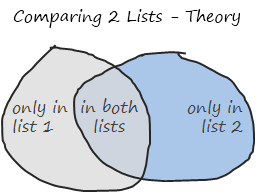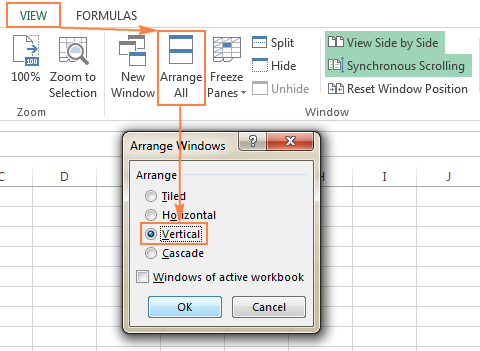

For this, we define the following arguments: VLOOKUP(lookup_value, Sheet!range, col_index_num, )Īs an example, let's pull the sales figures from Jan report to Summary sheet. The generic formula to VLOOKUP from another sheet is as follows: The difference is that you include the sheet name in the table_array argument to tell your formula in which worksheet the lookup range is located. It's very similar to a regular VLOOKUP formula that searches on the same worksheet. Dynamic VLOOKUP to pull data from multiple sheets into different cellsįor starters, let's investigate a simplest case - using VLOOKUP to copy data from another worksheet.VLOOKUP across multiple sheets with IFERROR.But with just a little patience, we will figure them out :) The good news is that Microsoft Excel provides more than one way to do this, and the bad news is that all the ways are a bit more complicated than a standard VLOOKUP formula. More often, you will have to search across multiple sheets or even different workbooks. When looking up some information in Excel, it's a rare case when all the data is on the same sheet.
How to use vlookup in excel 2010 to compare two sheets how to#
This means approximate match is the default mode, which can be dangerous.The tutorial shows how to use the VLOOKUP function to copy data from another worksheet or workbook, Vlookup in multiple sheets, and look up dynamically to return values from different sheets into different cells. Important: range_lookup is optional defaults to TRUE. When range_lookup is FALSE, VLOOKUP performs an exact match, as in the example above. A good example of this is using VLOOKUP to calculate grades. The word "range" in this case refers to "range of values" – when range_lookup is TRUE, VLOOKUP will match a range of values rather than an exact value. VLOOKUP has two modes of matching, exact and approximate, controlled by the fourth argument, range_lookup. To lookup values to the left, see INDEX and MATCH, or XLOOKUP. VLOOKUP can only look to the right. In other words, you can only retrieve data to the right of the column that holds lookup values: Above, the references are relative to make them easier to read. Note: normally, we would use an absolute reference for H3 ($H$3) and B4:E13 ($B$4:$E$13) to prevent these from changing when the formula is copied. = VLOOKUP (H3 ,B4:E13, 2, FALSE ) // first name = VLOOKUP (H3 ,B4:E13, 3, FALSE ) // last name = VLOOKUP (H3 ,B4:E13, 4, FALSE ) // email address For example, to get the name for order 1004, the formula is: ID, Amount, Name, and State for any order. With the Order number in column B as the lookup_value, VLOOKUP can get the Cust.

The purpose of VLOOKUP is to look up information in a table like this: See below for more information on matching. Important: range_lookup is optional and defaults to TRUE, so VLOOKUP will perform an approximate match by default. If range_lookup is FALSE, VLOOKUP will perform an exact match. If range_lookup is TRUE, VLOOKUP will perform an approximate match.

Finally, range_lookup controls match behavior. The column_index_num argument is the column number of the value to retrieve, where the first column of table_array is column 1. The first column of table_array must contain the lookup values to search. Lookup_value is the value to look for, and table_array is the range of vertical data to look inside. VLOOKUP takes four arguments: lookup_value, table_array, column_index_num, and range_lookup. The key to using VLOOKUP successfully is mastering the basics. In addition, VLOOKUP's default matching behavior makes it easy to get incorrect results. This makes it hard to use VLOOKUP with multiple criteria. Unlike INDEX and MATCH (or XLOOKUP), VLOOKUP needs a complete table with lookup values in the first column.

On the bad side, VLOOKUP is limited and has dangerous defaults. Using VLOOKUP successfully is a rite of passage: from beginner to skilled Excel user. For new users in particular, it is immensely satisfying to watch VLOOKUP scan a table, find a match, and return a correct result. On the good side, VLOOKUP is easy to use and does something very useful. VLOOKUP is probably the most famous function in Excel, for reasons both good and bad. Vertical data | Column Numbers | Only looks right | Matching Modes | Exact Match | Approximate Match | First Match | Wildcard Match | Two-way Lookup | Multiple Criteria | #N/A Errors | Videos Introduction VLOOKUP supports approximate and exact matching, and wildcards (* ?) for partial matches. Lookup values must appear in the first column of the table passed into VLOOKUP. VLOOKUP is an Excel function to get data from a table organized vertically.


 0 kommentar(er)
0 kommentar(er)
